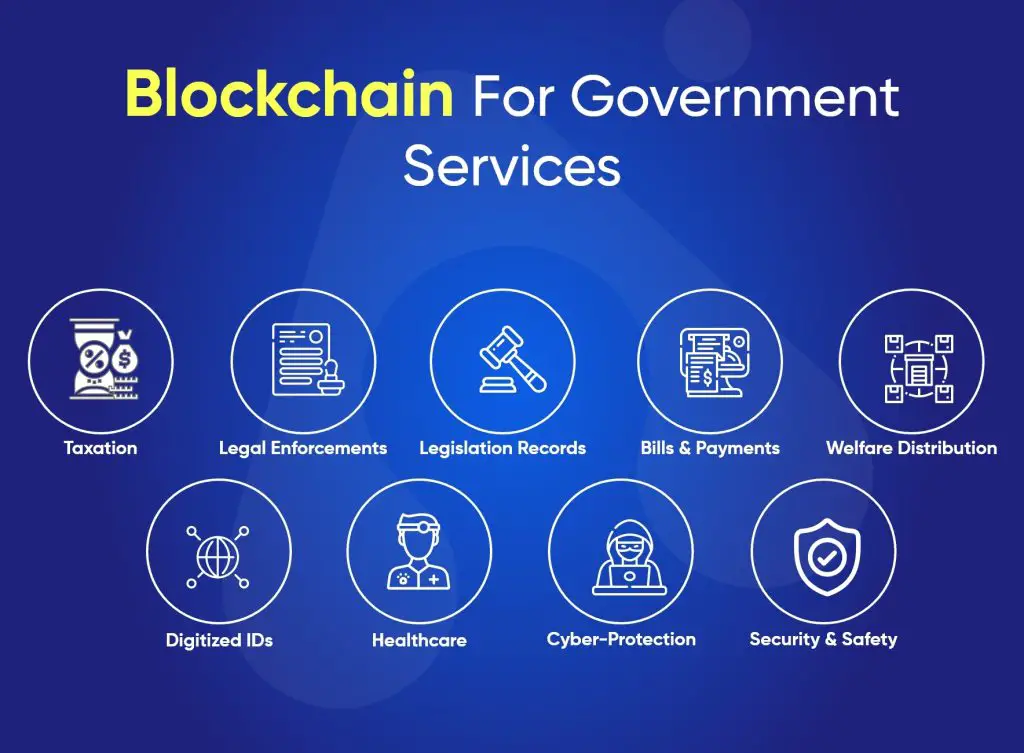Blockchain has emerged as a revolutionary force with the potential to transform various industries. Its underlying decentralized and transparent nature has garnered keen interest worldwide. As we look ahead to 2024, the adoption of blockchain is expected to skyrocket, driving innovation and ushering in exciting new trends. In this blog post, we will explore Blockchain Trends in 2024 on the horizon, highlighting their potential impact and the unique opportunities they present.
Brief explanation of blockchain technology and its potential impact
Blockchain technology, at its core, is a distributed ledger that records transactions across multiple computers in a tamper-resistant and transparent manner. Its decentralized nature eliminates the need for intermediaries, enhancing security and efficiency while reducing costs. This technology has the potential to revolutionize various industries, from finance and healthcare to supply chain management and government services.
Mention of the rapid growth of blockchain adoption worldwide
Over the past decade, blockchain adoption has surged, spanning across the globe. Governments, businesses, and individuals have recognized its immense potential, leading to widespread interest and investment. As we approach 2024, this growth is set to accelerate, solidifying blockchain’s position as a transformative technology.
Let’s get started…..
Trend 1: Interoperability and Cross-Chain Solutions
Blockchain’s true potential can only be realized when different networks seamlessly communicate and share data. In 2024, we anticipate a heightened demand for interoperability and cross-chain solutions.

Increased demand for seamless data transfer between different blockchain networks
As the blockchain ecosystem expands, the need for interoperability becomes increasingly critical. Blockchain networks must be able to communicate and share data effortlessly, enabling the transfer of assets and information across different chains. This demand for interoperability will result in the development of innovative protocols and solutions.
Emergence of specialized protocols enabling interoperability
To address the need for interoperability, specialized protocols are emerging. These protocols act as bridges between different blockchain networks, facilitating seamless communication. Examples include Polkadot, Cosmos, and Aion, which enable the exchange of assets and data across multiple chains, fostering collaboration and innovation.
Collaborative efforts to establish universal standards for cross-chain transactions
To further advance interoperability, collaborative efforts are underway to establish universal standards for cross-chain transactions. Industry players are working together to define protocols and guidelines that ensure compatibility and seamless integration between different blockchain networks. These standards will provide a solid foundation for future innovation and widespread adoption.
Trend 2: Decentralized Finance (DeFi) Evolution

Decentralized Finance, commonly known as DeFi, has emerged as one of the most exciting applications of blockchain technology. In 2024, we can expect the DeFi landscape to evolve and expand its scope beyond lending and borrowing.
Widening scope of decentralized financial applications beyond lending and borrowing
While lending and borrowing have dominated the DeFi space, the scope of decentralized financial applications is set to widen. We anticipate the emergence of new financial instruments such as decentralized insurance, derivatives, asset management, and more. These advancements will democratize access to financial services and empower individuals globally.
Integration of real-world assets into DeFi ecosystems
One of the most anticipated trends in the DeFi space is the integration of real-world assets into blockchain-based ecosystems. Through tokenization, physical assets such as real estate, art, and commodities can be represented digitally on the blockchain. This opens up a whole new realm of possibilities, allowing individuals to invest in traditionally illiquid assets, while ensuring transparency and efficiency throughout the process.
Enhanced scalability and lower transaction costs for DeFi platforms
Scalability and high transaction costs have been major challenges for DeFi platforms. In 2024, we foresee significant progress in addressing these issues. Layer-2 solutions, such as Ethereum’s Optimism and ZK-Rollups, will enhance scalability, allowing for a larger volume of transactions to be processed at lower costs. This will pave the way for mainstream adoption of DeFi a
Trend 3: Blockchain in Healthcare

The healthcare industry stands to benefit immensely from blockchain adoption. Beyond improving data security and patient privacy, blockchain technology holds the potential to transform medical research, clinical trials, and electronic health records (EHR) management.
Strengthened data security and improved patient privacy through blockchain adoption
Blockchain’s immutable and transparent nature enhances data security, mitigating the risks of data breaches and unauthorized access. By storing health records on a blockchain, patients have greater control over their personal information, allowing only authorized parties to access it. This heightened security and privacy will foster trust between patients and healthcare providers, ultimately improving the quality of care.
Integration of electronic health records (EHR) on blockchain for seamless access and sharing
Healthcare systems often suffer from a lack of interoperability and fragmented health records. Blockchain technology can address these challenges by providing a secure and decentralized platform for storing electronic health records. Patients and healthcare providers can seamlessly access and share records, leading to more accurate diagnoses, improved patient care, and streamlined processes.
Facilitation of medical research and clinical trials through secure data exchange
Blockchain’s transparent and immutable nature can greatly facilitate medical research and clinical trials. With blockchain, researchers can securely access and exchange data, ensuring its integrity and authenticity. This will enable faster and more accurate analysis, leading to the discovery of new treatments and therapies. Clinical trials can also benefit from blockchain’s ability to securely track and verify patient consent and data integrity, enhancing the overall reliability and efficiency of the process.
Trend 4: Sustainability and Green Blockchain

Source: Domtar Newroom
Sustainability has become a pressing global issue, and blockchain technology can play a significant role in promoting transparency, accountability, and eco-friendly practices in various sectors.
Increased focus on energy-efficient consensus mechanisms for blockchain networks
Blockchain networks have traditionally been criticized for their energy consumption. However, in 2024, we anticipate a shift towards more energy-efficient consensus mechanisms. Proof-of-Stake (PoS) and Proof-of-Authority (PoA) are gaining popularity due to their lower energy requirements compared to the traditional Proof-of-Work (PoW) consensus. These energy-efficient mechanisms will contribute to a greener blockchain ecosystem.
Adoption of blockchain in supply chain management for transparency and sustainability
Blockchain’s transparency and immutability make it an ideal solution for supply chain management. If we look for Blockchain Trends in 2024, we will witness increased adoption of blockchain in supply chains, enabling end-to-end visibility and traceability. By tracking products from their origin to the consumer, blockchain brings transparency and trust, reducing the prevalence of counterfeit goods and promoting sustainability efforts.
Blockchain-enabled carbon credit systems to incentivize eco-friendly practices
The battle against climate change requires innovative solutions, and blockchain can play a crucial role in incentivizing eco-friendly practices. Blockchain-enabled carbon credit systems allow individuals, organizations, and governments to earn and trade carbon credits for reducing their carbon footprint. This creates a financial incentive for adopting sustainable practices, fostering a greener and more sustainable future.
Trend 5: Blockchain in Government Services

Source: Live Trading News
Governments across the globe are recognizing the potential of blockchain technology to enhance public services, improve efficiency, and ensure transparency and trust.
Blockchain-based identity verification systems for secure and efficient public service delivery
Identity verification is a significant challenge in delivering government services. Blockchain offers a secure and tamper-resistant platform for identity verification, enabling efficient and reliable service delivery. By decentralizing identity management, blockchain-based systems can protect citizens’ personal information while ensuring seamless access to public services.
Transparent and traceable voting systems to ensure fair elections
The integrity of elections is paramount to any democracy. Blockchain can revolutionize the voting process by providing transparent and traceable systems. By recording votes on a blockchain, it becomes nearly impossible to alter or manipulate the results, ensuring fair and tamper-proof elections. This technology boosts public trust in the democratic process and strengthens the foundations of democracy.
Implementation of blockchain in tax processes for improved accuracy and reduced fraud
Tax processes often suffer from complexity and instances of fraud. Blockchain technology can simplify tax procedures by securely recording transactions and automating the verification process. This reduces the likelihood of errors and fraud while increasing accuracy and efficiency in tax collection. Blockchain-based tax systems can also promote transparency and accountability, building trust between taxpayers and governments.
Conclusion
As we peer into the future, it is clear that blockchain technology holds incredible potential to revolutionize various industries. If we look for Blockchain Trends in 2024, we can anticipate exciting developments in interoperability, DeFi, healthcare, sustainability, and government services. These trends will shape the landscape of blockchain and unlock novel opportunities for innovation and societal impact.
Summary
In summary, the 5 hottest blockchain trends in 2024 are:
-
- Interoperability and Cross-Chain Solutions, enabling seamless data transfer between different blockchain networks.
- Decentralized Finance (DeFi) Evolution, expanding the scope of financial applications and integrating real-world assets.
- Blockchain in Healthcare, strengthening data security, facilitating EHR management, and enhancing medical research and clinical trials.
- Sustainability and Green Blockchain, focusing on energy-efficient consensus mechanisms, blockchain adoption in supply chain management, and carbon credit systems.
- Blockchain in Government Services, utilizing blockchain for identity verification, transparent voting systems, and improved tax processes.
FAQs:
1. How does blockchain technology ensure the security of healthcare data?
Blockchain technology ensures the security of healthcare data through its decentralized and tamper-resistant nature. By storing health records on a blockchain, patient information is protected from unauthorized access and tampering. Blockchain’s transparent and immutable nature also enhances data integrity and authenticity, enabling secure and private sharing of healthcare data.
2. Can blockchain really make government services more efficient?
Yes, blockchain has the potential to significantly improve the efficiency of government services. By utilizing blockchain-based systems for identity verification, voting, and tax processes, governments can streamline operations, reduce instances of fraud, and increase transparency and trust. Blockchain’s tamper-proof nature and secure data storage mechanism facilitate secure and efficient public service delivery.
3. How does cross-chain interoperability benefit the blockchain ecosystem?
Cross-chain interoperability is crucial for the growth and development of the blockchain ecosystem. It enables different blockchain networks to communicate and share data seamlessly, fostering collaboration and innovation. Cross-chain interoperability expands the possibilities for asset transfer and information exchange, promoting the adoption and evolution of blockchain technology.




